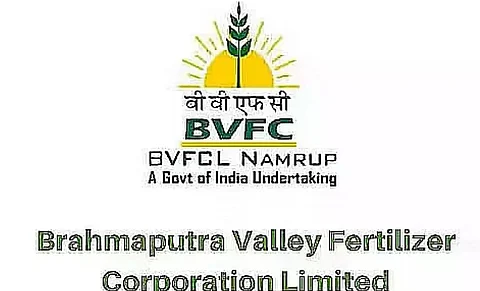
- Home
- Live Blog
- Breaking News
- Top Headlines
- Cities
- NE News
- Sentinel Media
- Sports
- Education
- Jobs

The Centre’s decision to wind up the Namrup plants of Brahmaputra Valley Fertilizer Corporation Ltd (BVFCL), as reflected in a Lok Sabha answer to a query by Assam MP Gaurav Gogoi a couple of days ago, is bad news not just for the industrial township of Namrup but for the entire state. This shocking news has come even as the public-sector company has taken up certain significant initiatives for product diversification and business expansion. These included increasing production of fertiliser by utilising in-house expertise and funding, apart from setting up a 3000 MT per year capacity Water Soluble NPK production facility, a 400 MT per day capacity single superphosphate and granular SSP plant, doubling the production capacity of its Liquid Bio Fertiliser Plant, generating revenue by way of uploading surplus captive power to the state or national grid, and marketing imported fertiliser. The Namrup fertiliser factory, which was originally set up by the Fertiliser Corporation of India (FCI) in 1961, had almost shut down within a year of its establishment when then Prime Minister Jawaharlal Nehru thought that the factory—and for that matter any investment in Assam or the Northeast—would go into the hands of the Chinese. Had it not been for the visionary MN Phukan, a brilliant bureaucrat of Assam, who had taken up the matter face-to-face with Nehru in 1963, Namrup would have never seen the light of day. The second time the Namrup fertiliser factory was saved from extinction was when Hindustan Fertiliser Corporation Ltd. (HFCL), a successor to FCI, was bifurcated following a strong recommendation of Dinesh Goswami, which was implemented in 2002 to separate Namrup from the sick Durgapur and Haldia factories in West Bengal and establish the Brahmaputra Valley Fertiliser Corporation Ltd. (BVFCL). The fact remains that the country’s first gas-based fertiliser factory had turned sick primarily because of the failure of successive regimes at the Centre to review its functioning and carry out timely upgrades and replacements of its equipment and machinery. Namrup, the only fertiliser factory in the Northeast, is not only required to meet the fertiliser demands of the region but also look at neighbouring countries like Bhutan, Myanmar, and Bangladesh as easily available export markets. The fact that there is a huge demand in the country for fertiliser and that this demand is increasing every passing day is reflected in the 40th report of the Standing Committee on Chemicals and Fertilisers (2022–23). The said report has put on record the fact that India’s food grain requirement to feed the estimated population of 1400 million by 2025 will be 300 million metric tonnes (based on rice, i.e., unhusked paddy rice). There will be a corresponding increase in the requirements for other crops such as cotton, sugarcane, fruits, and vegetables. The country will require about 45 million metric tonnes of nutrients (30 million metric tonnes for food grains and 15 million metric tonnes for other crops) from various sources of plant nutrients, i.e., fertilisers, organic manures, and bio fertilisers. It has also been stated that any further increase in crop production will have to come from an increase in yields, as there is limited scope for increasing cultivated area. The yields of the majority of the crops are relatively low, and there is great potential for increasing them through the increased use of inputs such as fertilisers. Given this scenario, the Standing Committee report has emphasised that fertiliser use will remain key to the future development of agriculture. But the ground reality is that while around 75% of Urea, 40% of DAP, and 85% of NPK are produced in the country by PSUs and private companies against the total requirement, the gap has been sought to be met by imports in order to bridge the gap between the requirement and production of fertilisers. Ironically, while the country at the moment needs increased fertiliser production, the decision of the Centre to permanently close down BVFCL Namrup is nothing but an example of shortsightedness. Taking a look at the 40th report of the Standing Committee on Chemicals and Fertilisers (2022–23), one will be surprised to see that the health of almost all the public sector fertiliser plants across the country has turned from bad to worse and that Namrup is not an exception. The need of the hour is that the Government of Assam, under the leadership of Chief Minister Himanta Biswa Sarma, should take up the issue at the highest level—the Prime Minister—and convince the Centre to review its decision and announce a total revamp of the Namrup plants by making a major investment of, say, Rs 12,000 crore. It is also for the MPs from Assam, both in Lok Sabha and Rajya Sabha, to cut across party lines and raise their loud, united voice for protecting and revamping BVFCL. Namrup is not Jagiroad.